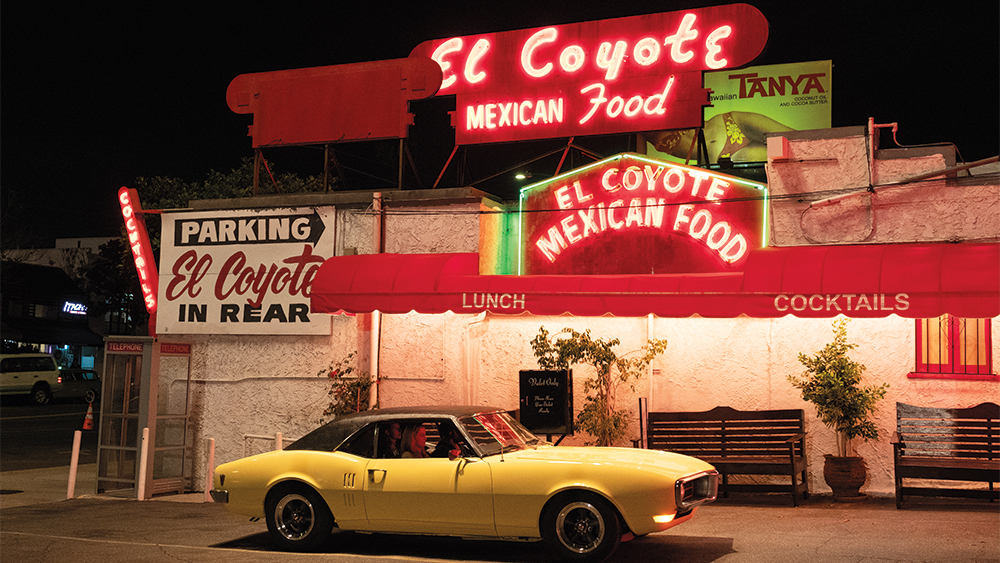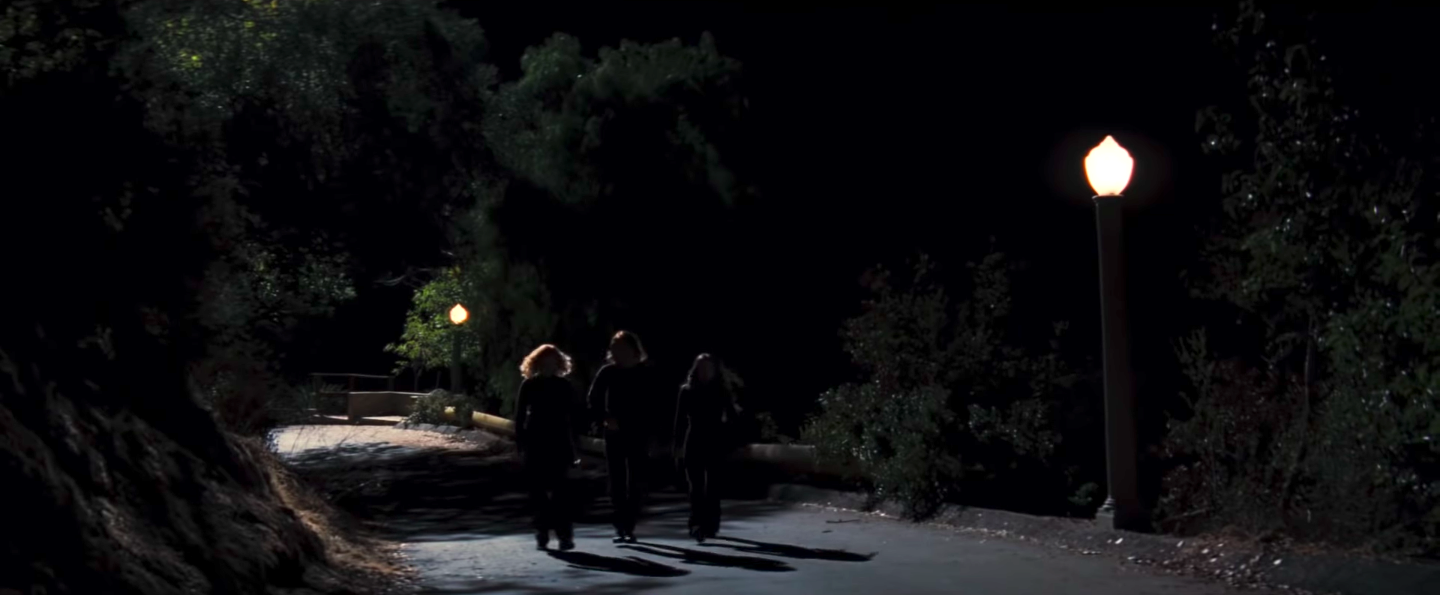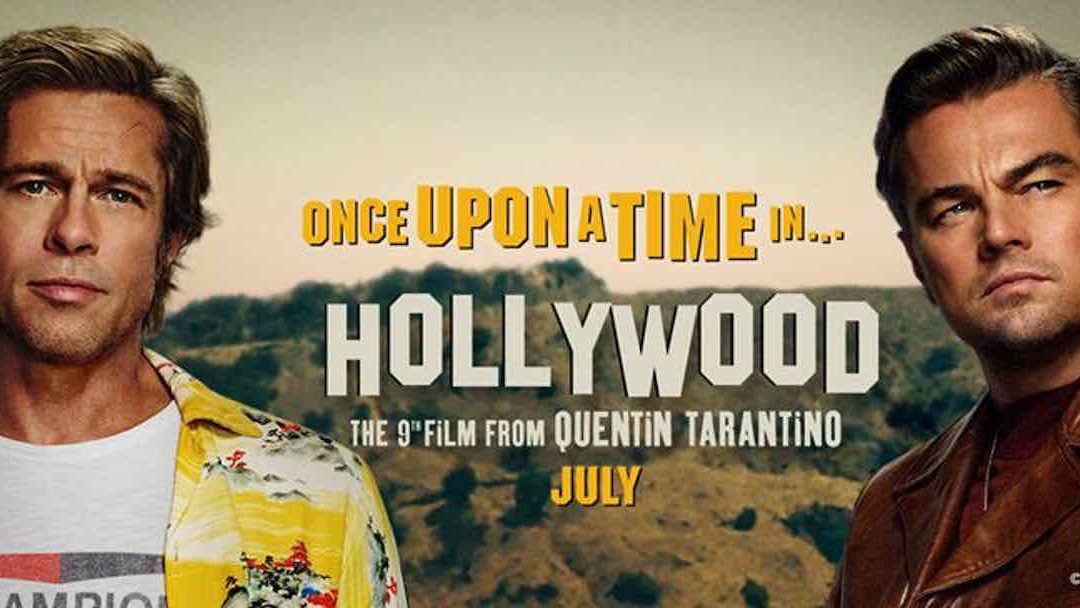Directed by Quentin Tarantino in 2019, Once Upon a Time in Hollywood is an overall unpredictable film that explores many aspects of filmmaking within. The storyline incorporates real events but uses fictional characters to tell them. The film includes many aspects of 1960’s films, the props themselves, camera angles and shots, cinematography, and actual footage from the 1960’s.
Beginning with the main characters, Rick Dalton (Leonardo DiCaprio) and Cliff Booth (Brad Pitt), these two drive the story as they hope to continue acting in Hollywood. Because of the ever-changing film industry, both Rick and Cliff struggle with the idea that they may not be actors for long. Rick receives advice from Marvin Schwarz (Al Pacino), a notable person in the film industry, that he should consider going to Italy to shoot Italian westerns; Rick initially despises this idea so he continues to work on his acting skills to keep his fame in the US. As Rick is working on his career, viewers are brought along on an adventure with Cliff which gives us insight as to who he really is and whether or not the rumors of his past are true. Viewers also follow along another character, Sharon Tate (Margot Robbie), as she reflects on how her acting career is not near its end, counteracting with Rick’s struggle.

“Rick Dalton” rehearsing his lines.
With many techniques employed from 1960’s films, Once Upon a Time in Hollywood allowed viewers to reminisce on the style. The film included many shots of neon marquees, collectable cars, and ranch style homes. One of my favorites is the classic crane shot beginning at the neon sign at the restaurant all the way to the characters arriving at this location. The constant inclusion of these older film tropes allowed viewers to remind themselves that they were watching a film based off of the 1960’s even though they could see Leonardo DiCaprio and Brad Pitt.

El Coyote, one of Sharon Tate’s favorite restaurants, relevant in the final scene.
One of the most interesting aspects of the film was the use of archival footage from old western shows and movies. In the quick preview of Rick’s show, Bounty Law, he was masked onto the original film to make it look as if he was there during the actual production of the show. Continuing off of Rick’s acting career, Tarantino includes the footage of Rick acting to make it seem like we are watching the film that they are currently producing. Therefore, we are watching a movie about show being created.

“Rick Dalton” on set of the production “Bounty Law”
Tarantino’s use of parallel editing gives the impression that the characters will eventually meet up later in the film. The final scene is where all of these characters finally come together. Without spoiling the ending, this scene is very unexpected yet entertaining. All of the details prior to this scene are very important because they finally connect in the end. Though the scene, in a way, is resolving, it is horrifying because of the unpredictable twist. In terms of the real-life event of Sharon Tate, this final scene is very similar, though not accurate in terms of who, where, and the ending results.

The final scene of the film.
Overall, this film is very dependent on viewers interpretations. They get to decide what type of person each of the characters are because Tarantino does not make it direct; this allows for interesting conversation following the film. Once Upon a Time in Hollywood gives viewers insight to a complicated film industry and a glance at the history of 1960’s film. To conclude, this astonishing, jaw-dropping film is one that I highly recommend because of its classic film tropes and unpredictable plot. This drama/thriller is exactly something a Tarantino fan can expect, aesthetic violence.
Nominated for 10 Oscars at the 92nd Academy Awards this year, Once Upon a Time in Hollywood walked away, at the end of the ceremony with two Oscars. The Oscar for Best Supporting Actor, Brad Pitt, and the Oscar for Best Production Design.
Star Review
![]()


Trackbacks/Pingbacks